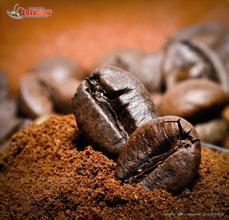The difference between Starbucks Coffee Bean washing and semi-washing
The difference between Starbucks Coffee Bean washing and semi-washing
After taking out the sticky pods of the red fruit, move them into a large sink, followed by the most important washing and fermentation to remove pectin shavings from the pods. This sticky material is not easy to wash away with water, so it is necessary to hydrolyze the pectin with all kinds of bacteria in the tank, decompose the pectin and wash the pods in the tank to accelerate the pectin to break away from the pods. The fermentation process takes about 16 to 36 hours, depending on temperature and humidity, when malic acid is naturally produced in the tank. Citric acid. Acetic acid. Lactic acid and propionic acid. Interestingly, the raw bean itself contains almost no acetic acid, but the fermentation process of washing treatment can increase the acetic acid concentration of the bean, which is beneficial to the flavor of coffee. Not only can these acids inhibit mold parasitism, some acid elves will also be mixed into beans (which is why washed beans taste so sour), but samples must be taken at any time to see if the sticky pectin on the pods is clean, and then decide whether to stop fermentation and take out clean pods. Once it lasts more than 36 minutes, it may ferment too much, producing too many fatty acids and butynic acid and giving off a bad smell. Moreover, beans mixed with too much acid will make coffee too sour and Chongqing is a bad bean!
In the case of proper sun treatment, there will be higher sweetness and various ripe fruit flavors. When the coffee fruit is dried, it will be separated from the dried pericarp, pulp and endocarp.
After getting rid of the peel, the sun treatment is also a particularly time-consuming place, which requires coffee farmers to manually screen and pick out defective beans. Of course, drying in the drying field is also a risky way, because if it is not handled properly, the whole batch of coffee fruit will be destroyed. To reduce risk, smart coffee farmers also use African beds as a drying method to better dry coffee fruits and reduce spoilage. Happy coffee growers pick relatively ripe coffee cherries from trees and pour them into a pool filled with water for the first screening, which is the same as washing. After the screening is completed, it is sent to the drying ground for drying and fermentation for about a month. During this month, the coffee fruit needs to be constantly turned and observed in order to prevent the coffee fruit from excessive fermentation or even spoilage.

Important Notice :
前街咖啡 FrontStreet Coffee has moved to new addredd:
FrontStreet Coffee Address: 315,Donghua East Road,GuangZhou
Tel:020 38364473
- Prev

Introduction to the processing process of Coffee Bean Water washing treatment-- the flavor of the producing country describes the taste producing area
Introduction to the processing process of washing coffee beans-- description of taste in producing areas: 1. Selection of beans: put the harvested fruits in a sink filled with water and soak for about 24 hours. At this time, ripe fruit will sink, while immature and overripe fruit will float up and can be removed. 2. Remove the pulp: use a machine to remove the skin and pulp, leaving only the coffee wrapped in the endocarp.
- Next

espresso coffee extraction principle-taste description flavor introduction
espresso coffee extraction principle-taste description flavor introduction 1, reasonable range for a cup of erpresso, 25 seconds 30 ml, once everyone remembered the golden rule. However, in the constant exploration and experiment of fine coffee, a group of revolutionary intellectual barista emerged among coffee people, who almost completely abandoned the restrictions of the rules and regulations and used their own coffee.
Related
- What is the meaning of lactic acid fermentation with coffee bean treatment?
- How to judge the state of foam by sound?
- How does the latte pull out the unicorn pattern? Come to get for a little trick to improve the flower pull!
- Will flower pulling affect the taste of the latte?
- Do you know the history of coffee?
- The difference between honey treatment and sun washing what is raisin honey treatment?
- What kind of milk can a novice use to make coffee foam to keep the foam longer? The correct method and skills of milking tutorial sharing
- Why do washed coffee beans taste sour? Flavor characteristics of washed Coffee
- Introduction to the skill of how to practice the size and height of water injection around the circle of hand-brewed coffee
- How do beginners practice coffee flower drawing from scratch?

